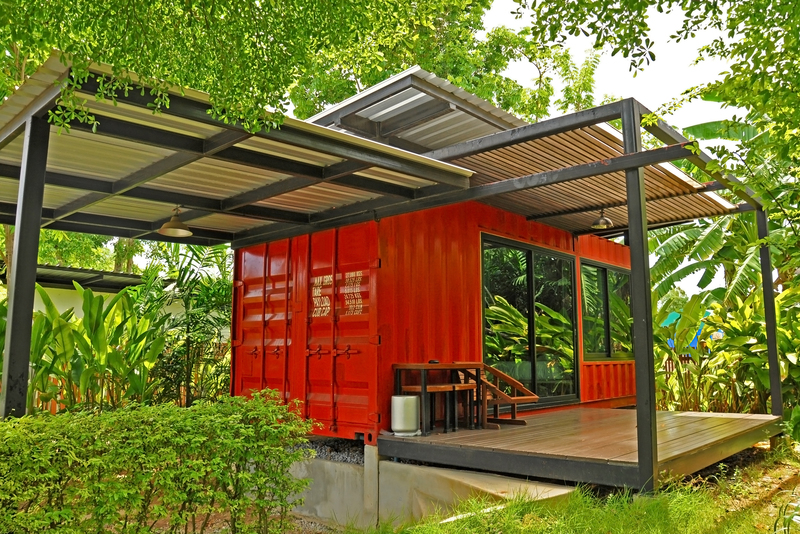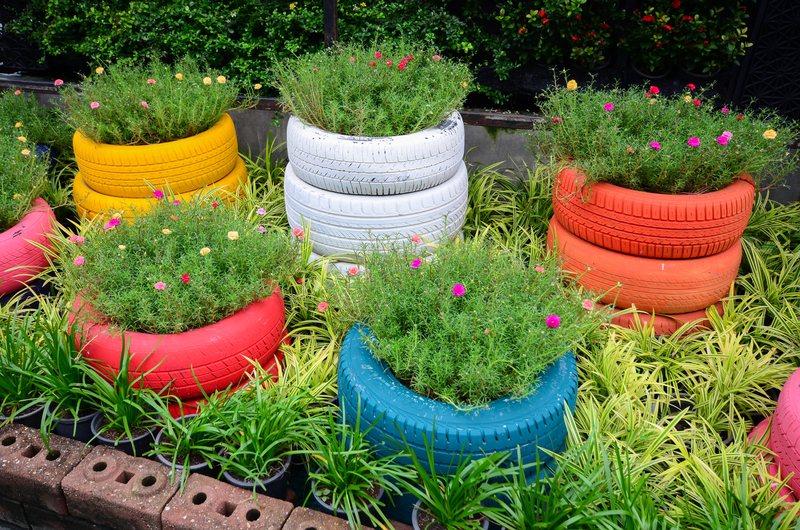Giving Your Old Pots and Pans a Second Life Through Recycling
Do you have old, scratched, or dented cookware collecting dust in your kitchen cabinets? Many of us aren't sure what to do with worn-out pots and pans--should you throw them away or is there a better option? Recycling your old cookware is not just eco-friendly, but also a creative way to give your kitchen essentials a brand new purpose. In this in-depth guide, we'll explore a range of practical, sustainable, and inspiring ways to extend the lifecycle of these kitchen staples, including how to recycle old pans, creative upcycling projects, and important tips for environmentally responsible disposal.

Understanding the Recycling Process for Cookware
Why Recycle Pots and Pans?
- Environmental Benefits: Recycling prevents metal cookware from ending up in overflowing landfills where it can take decades to break down.
- Resource Conservation: Reprocessing metals saves tremendous amounts of energy and reduces the demand for new raw materials.
- Creative Reuse: Upcycling gives you a unique way to transform your old kitchen tools into something new and functional.
Types of Pots and Pans Suitable for Recycling
Most kitchen cookware is made from a variety of metals, including:
- Aluminum
- Stainless Steel
- Copper
- Cast Iron
While almost all metals can be recycled, it's important to know if your pans have non-metallic coatings, handles, or other parts that need removal before recycling.
Options for Recycling Old Pots and Pans
1. Metal Recycling Centers
Most local recycling centers accept metal cookware, but check if your recycling service accepts scrap metal. Before dropping off your worn-out pots and pans, remove non-metal parts such as plastic or wooden handles and glass lids. Call in advance to verify the accepted material types.
2. Scrap Yards and Buyback Programs
Another eco-friendly option is taking your old pans to a scrap metal yard. Scrap dealers often accept any metal item, regardless of its condition, and may even give you a small sum for your cast-offs. Large-scale cookware brands, such as Calphalon or Tefal, sometimes offer recycling or take-back programs--check brand websites for details.
3. Retail Store Trade-In Services
Some retail stores, both big-box and specialty kitchen stores, offer trade-in programs where you can recycle your old cookware when purchasing new items. This option not only ensures your old cookware doesn't go to waste but also offers discounts on your replacements.
4. Donation and Community Freecycling
If your pans are still functional, consider donating them to:
- Charities or thrift stores
- Local shelters or group homes
- Community kitchens or schools
- Friends, neighbors, or listing on Freecycle/Buy Nothing groups
5. Repurposing and Upcycling at Home
For DIY enthusiasts, giving your old pans a second life at home can be fun and rewarding. There are countless creative projects to try--from turning worn-out frying pans into stunning planters to building clocks and wall art. Read on for inspiring ideas!
Preparing Cookware for Recycling
Disassembling Old Pots and Pans for Recycling
Proper preparation is crucial for effective recycling. Here are actionable steps:
- Remove all non-metal components. Unscrew or cut off handles, knobs, or rubber grips.
- Separate different materials. If your pan combines multiple metals (like copper bottoms), separate where possible.
- Clean thoroughly. Rinse off food debris and grease for ease of processing at recycling facilities.
- Sort by type. Group aluminum, steel, and cast iron pans for more efficient recycling drop-offs.
Labeling and Documentation
Some recycling centers require information about the metal type. If you are unsure, research the brand model online or ask a professional recycler to assist you in identifying the metal.
Creative Ways to Upcycle Old Pots and Pans
Transforming Cookware Into Home & Garden Decor
Upcycling keeps your old pans out of landfills and adds unique character to your home. Unleash your creativity with these ideas:
- Garden Planters: Turn large pots or pans into eye-catching planters for flowers, herbs, or succulents. Drill drainage holes in the base and decorate the outside with paint or mosaics.
- Birdbaths or Feeders: Convert a sturdy, shallow frying pan into a rustic birdbath or feeder for your backyard, providing wildlife a place to rest and feed.
- Wall Art: Create striking wall pieces by mounting pans of various sizes and metals on your kitchen or patio wall. Arrange in patterns or paint them for a pop of color.
- Clock Faces: Attach clock mechanisms to the base of an old frying pan or pot lid for a whimsical, one-of-a-kind wall clock.
- Hanging Lighting Fixtures: Repurpose colanders or perforated pans into chic pendant lights that cast artistic shadows.
Craft and Storage Solutions
- Desk organizers: Use small saucepans to store pens, pencils, or craft tools on your desk.
- Jewelry holders: Old pan lids become unique, vintage-inspired earring or necklace holders with the addition of hooks.
- Kitchen storage: Line shelves with old pans to sort utensils, spice jars, or dish towels.
Fun Family Projects
- Mini Greenhouses: Large glass lids serve as covers for seedlings, creating a warm microclimate for young plants.
- Mosaic Art: Smash ceramic or enameled pans to use the pieces for beautiful mosaic projects.
- Toy Drums: Let the kids enjoy old pots as makeshift percussion instruments for playtime.
What Not to Do With Your Old Cookware
Before recycling your pots and pans, avoid these common mistakes:
- Don't place cookware in curbside bins unless your municipal recycling program explicitly allows metal cookware.
- Don't recycle pans with non-stick coatings at scrap yards, as chemicals in coatings may require special handling.
- Don't burn old cookware, especially those with Teflon or synthetic coatings, as toxic fumes may be released.
Safe Disposal of Non-Stick Cookware
Non-stick (PTFE or Teflon) pans usually require special recycling processes due to chemical coatings. Contact the manufacturer, local hazardous waste facilities, or metal recyclers for safe disposal instructions.
Frequently Asked Questions About Recycling Old Pots and Pans
Can I put old pots and pans in my household recycling?
Most residential recycling bins aren't equipped for scrap metal. Instead, use a local recycling center, scrap yard, or specialty take-back program for old cookware disposal.
Are non-stick pans recyclable?
Generally, non-stick cookware can't go in standard metal recycling because the coating needs to be removed first. Some manufacturers or specialty facilities accept these items.
Do thrift stores accept old pans?
If your pans are still functional (no deep rust or hazardous coatings flaking off), many thrift stores, shelters, or charities will gladly accept them. Always clean them first and check the store's donation guidelines.
Can old cookware be donated?
Yes! Donating usable cookware extends its life and helps those in need. Avoid donating anything that is cracked, has peeling nonstick surfaces, or is extremely damaged.
What about pots with glass lids or plastic handles?
Remove glass lids and plastic handles before recycling metal pans. Glass can often be recycled separately, and plastic may need to go into a different waste stream. Check local requirements.
Tips for Purchasing Sustainable Cookware in the Future
Considering a new set of kitchenware? Choosing eco-friendly pots and pans ensures you make a sustainable impact from the outset.
- Favor recyclable metals: Stainless steel, cast iron, copper, and aluminum all recycle well.
- Seek out brands with recycling programs: Many eco-conscious companies offer take-back or buyback programs for when your cookware reaches end-of-life.
- Buy high-quality, durable cookware that needs less frequent replacement, saving money and resources.
- Look for interchangeable parts--handles, knobs, and lids that can be repaired rather than replaced entirely.
- Choose uncoated pans where possible, or opt for ceramic coatings rather than PTFE-based non-stick materials.

The Environmental Impact of Recycling Cookware
Each year, millions of tons of metal cookware are discarded worldwide. Recycling or repurposing even a single pot or pan reduces landfill waste and cuts the considerable environmental toll of mining and producing new metals. Every small decision adds up--by giving your used kitchen tools a second life, you're playing a part in building a greener, more resourceful world.
Statistics on Recycling Metal Cookware
- Metal recycling saves 70-90% of the energy required to produce new metals from raw ore.
- About 75% of all aluminum ever produced is still in use today, thanks to recycling.
- One recycled pot can offset enough energy to power a 100-watt light bulb for several hours.
Conclusion: Reinventing Old Pots and Pans for a Sustainable Future
Giving old pots and pans a second life through recycling and upcycling is both an eco-friendly and rewarding practice. Whether you donate, recycle, or repurpose them with inventive DIY projects, your actions help cut down waste and conserve natural resources.
So, the next time you're ready to retire a well-loved frying pan or that dented stockpot, remember the power of creativity and mindful recycling. With a little effort, you can transform what might have been trash into treasures for your home, community, or the environment.
Tackle your old kitchen cookware today--your planet (and your kitchen) will thank you for it!